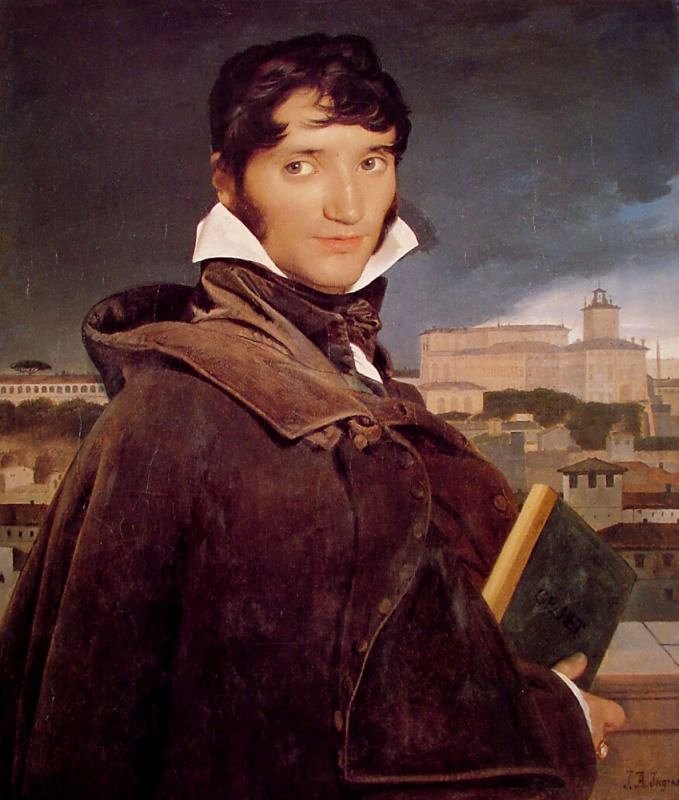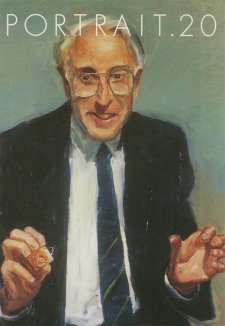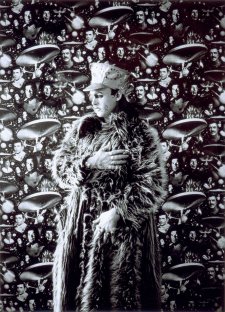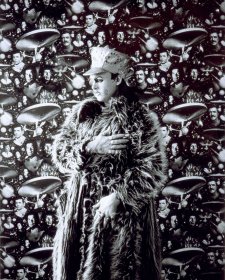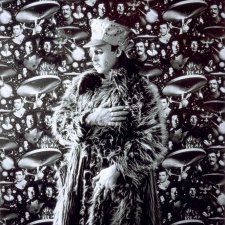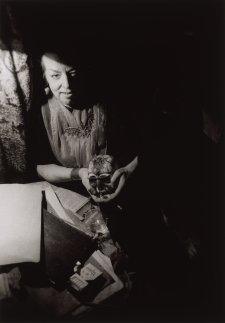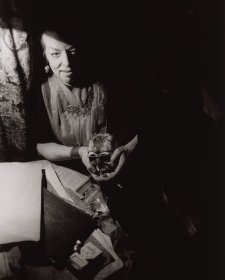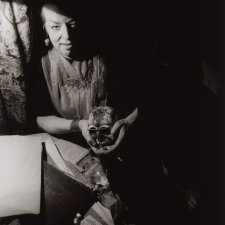Ingres was one of the greatest portrait painters in history. Like many great portrait artists, Gainsborough and Sargent included, he eventually came to complain about the demands of portrait painting. In Ingres' case creating likenesses was an ever-present and necessary distraction from the large-scale historical, mythological and religious paintings which drove his ambition as a painter.
Replete with magnificent portraits, the current exhibition of Ingres at the Louvre gives the full picture of the artist's work, setting the portraits in the context of Ingres as a painter of vast canvasses and complex compositions. Many of Ingres' more ambitious works seem hollow, devoid of a real capacity to engage us. And it is not only modern taste that finds these larger compositions overworked and unconvincing - his own contemporaries sometimes found fault with his history pictures. Ingres spent close to ten years working up a huge canvas Le Martyre de Saint Symphorien but when it was displayed in 1834 it was derided as overcooked and confusing. After such a disastrous reception Ingres took up a position in Rome, returning to the city in which he had spent the formative years of his career.
Ingres could make grandiose statements, too, in portraiture. His 1806 portrait of Napoleon on the imperial throne is less of a portrait than an icon, a painting of uncompromising frontality and formality. It is both portrait and self-conscious history painting, straining to make a statement worthy of an earlier age of religious image-making. But that was a rare, early moment in his career as a portrait painter. In the first room of the exhibition, clamped between the stiff 1803 portrait of Napoleon and the 1806 imperial portrait are smaller and sensuous portraits of the Riviere family with their serpentine furs and silk wraps, These paintings stand at the beginning of a thread of relaxed opulence in portrait representation that was to sustain Ingres throughout his career.
For the devotee of portraiture there are several magnificent rooms in the exhibition. The room devoted to portraits painted in Rome during the Napoleonic occupation is a rich succession of portraits of powerful men - bureaucrats and ambassadors who were parts of the Napoleonic administration. Not all of the portraits of Ingres' first Roman period depict officialdom. His portrait of fellow painter Francws-Manus Granet, painted on the roof of the Villa Medici includes a view of Rome with the Palazzo del Quirinale. Ingres also presents Rome under a stormy sky. Many of the Roman portraits are likewise sombre and brooding and betray the sense that the empire of the French inhabitants of Rome is all going to come to an end one day.
The mood of unrelieved seriousness of the Roman paintings is set against a selection of portrait drawings of children. Ingres made many hundreds of portrait drawings and it was an inspired move on the part of the exhibition curators to focus on children and family groups. Sometimes these compositions could be as complex and detailed as a painting, as one of Ingres' most celebrated drawings of the Stamaty family drawn in Rome in 1818.
In an exhibition of Ingres one expects to be admiring, impressed, dazzled - but not moved. Yet this exhibition included a particularly poignant sequence of drawings of the artist's wife. Ingres married Madeleine Chapelle in 1813 and during the 36 years of their life together he made 10 drawings of her, nine of which are included in the exhibition. Amid so much outward display, the direct simplicity of the drawings in this sequence is affecting. The first of the drawings were made in the early years of the marriage and have a fresh, youthful quality (although Madeleine was 31 when she met Ingres). Over the course of the ten drawings we see her expression mature and her face subtly change with age. The drawings reflect the bond of affection in Ingres' marriage as well as the domestic constancy of the world that underpinned his more public positions and the ambition of his big set-pieces.
In a final sequence of portrait drawings the focus is on musicians as subjects. Ingres was devoted to music, choosing art over a possible career as a string player, his devotion grving rise to the French expression le violon d'lngres (meaning a hobby or non-serious sideline). Yet during his second period in Italy, Ingres' musical world included some of the most important figures in the European musical world of his day - the virtuoso performers Liszt and Paganini and Charles Gounod who he captured in portrait drawings.
It is not possible to see an exhibition covering all aspects of the output of Ingres without recognising the intensely sensual, even erotic aspect of his work. This is obviously present in his bathers, odalisques and Turkish bath paintings, but it is also present in his portraits of women. One of the last rooms of portraits in the exhibition is as dazzling as any mid 19th century high society ball room, including portraits of women in opulent interiors. It includes the two portraits of Madame Moitesster, Ingres' most difficult and drawn out commission, the final work taking 12 years to complete; the portraits of La Princesse de Broglie and La Vicomtesse d'Haussonville. These are portraits of such compelling virtuosity that you can hear the rustle of satin and silk.
